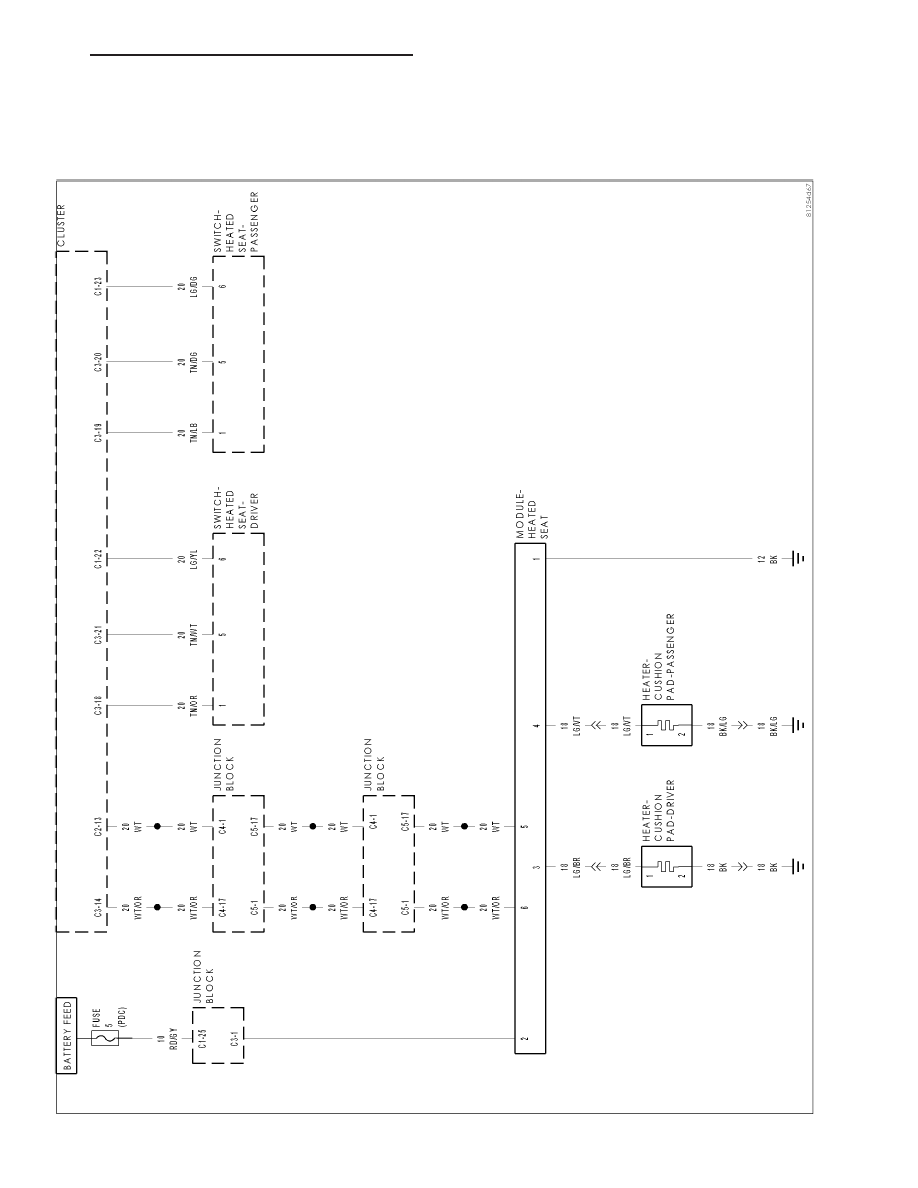Dodge Durango (HB). Manual - part 285

SCHEMATICS AND DIAGRAMS
HEA
TED
SEA
T
SYSTEM
SCHEMA
TIC
HB
HEATED SEATS - ELECTRICAL DIAGNOSTICS
8G - 87
|
|
|

SCHEMATICS AND DIAGRAMS HEA TED SEA T SYSTEM SCHEMA TIC HB HEATED SEATS - ELECTRICAL DIAGNOSTICS 8G - 87 |